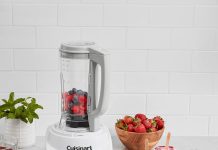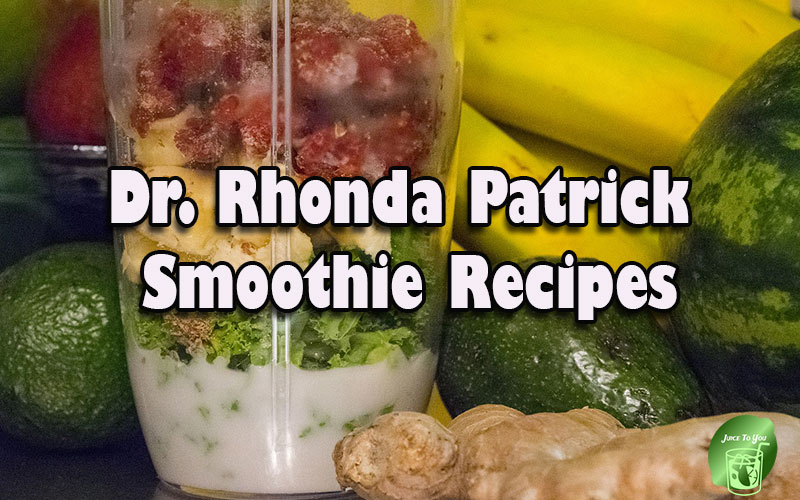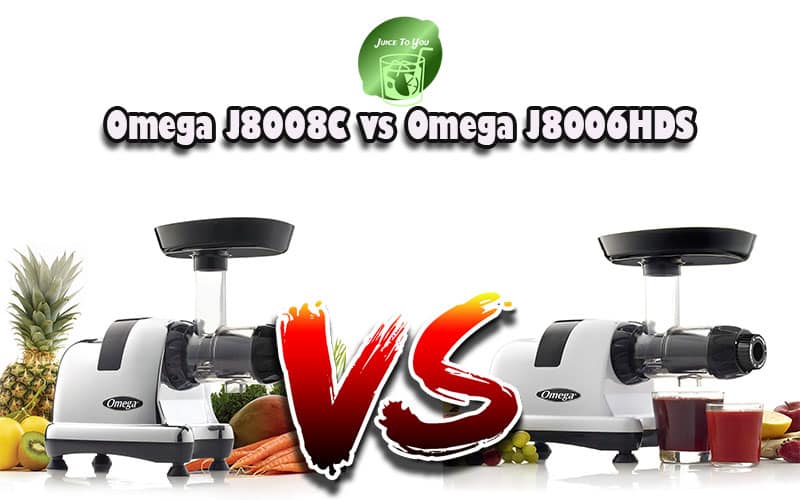Juicing has become an extremely popular trend for health-conscious individuals who want to incorporate more nutrients into their diet. But when it comes to juicing vegetables and fruits together, many people are left wondering if it’s a good idea. After all, vegetables and fruits have different textures and flavors, so can they really be blended together to create a harmonious and delicious juice? In this article, we will explore the benefits and drawbacks of juicing vegetables and fruits together, helping you make an informed decision about this popular juicing practice.
Review contents
Benefits of Juicing Vegetables and Fruits Together
Increase in Nutrient Intake
When you juice vegetables and fruits together, you can significantly increase your nutrient intake. Juicing allows you to consume a larger quantity of fruits and vegetables in one serving. By extracting the juice, you are able to unlock the nutrients and vitamins that may be trapped within the fibrous parts of the produce. This means that you can get more vitamins, minerals, and antioxidants from your juice than you would by simply eating the whole fruits and vegetables.
Promotes Digestive Health
Combining vegetables and fruits in your juice can promote digestive health. Fruits are rich in natural sugars and enzymes, which can aid in digestion. They can help to break down food and improve nutrient absorption. Meanwhile, vegetables contain fiber, which adds bulk to your stools and can prevent constipation. The combination of fruits and vegetables in your juice can promote a healthy digestive system and regular bowel movements.
Boosts Energy Levels
Juicing vegetables and fruits together can provide a natural energy boost. Fruits such as oranges, apples, and berries contain natural sugars that can provide a quick burst of energy. However, unlike processed sugars, the sugars in fruits come with essential vitamins and minerals that contribute to overall health. Additionally, vegetables like celery and cucumber are hydrating and can give you a refreshing boost of energy. By juicing a combination of fruits and vegetables, you can give your body the fuel it needs to power through the day.
Aids in Weight Loss
If you’re looking to shed a few pounds, juicing vegetables and fruits together can be a great addition to your weight loss journey. Juicing allows you to consume a larger volume of produce in an easily digestible form. The fiber in vegetables and the natural sugars in fruits can help you feel fuller for longer, curbing your appetite and reducing the desire to snack on unhealthy foods. Additionally, the high nutrient content in juices can support your body’s overall health and metabolism, aiding in weight loss.
Enhances Detoxification
One of the benefits of juicing vegetables and fruits together is the detoxifying effect it has on the body. Fruits and vegetables are rich in antioxidants, which can help neutralize harmful free radicals in the body. These free radicals can cause cellular damage and contribute to chronic diseases. By regularly consuming juices that combine a variety of fruits and vegetables, you can support your body’s natural detoxification processes and promote overall wellness.
Improves Skin Health
Juicing vegetables and fruits together can also have positive effects on your skin health. Many fruits and vegetables are packed with vitamins, minerals, and antioxidants that can help keep your skin clear and radiant. For example, fruits like oranges and berries are rich in vitamin C, which is essential for collagen production and skin elasticity. Leafy greens such as spinach and kale are high in vitamins A and E, which can help protect and nourish your skin. By juicing a combination of fruits and vegetables, you can provide your skin with the nutrients it needs for a healthy and youthful appearance.
Supports Immune System
By juicing vegetables and fruits together, you can give your immune system a boost. Fruits and vegetables are rich in essential vitamins and minerals that play a vital role in supporting immune function. Vitamin C, found in citrus fruits, is known to strengthen the immune system and protect against illnesses. Leafy greens, like spinach and kale, are high in antioxidants that can help fight off harmful pathogens. By regularly consuming juices that combine a variety of fruits and vegetables, you can provide your immune system with the nutrients it needs to stay strong and resilient.
Reduces Inflammation
Inflammation is a natural immune response, but chronic inflammation can contribute to various health issues. Juicing vegetables and fruits together can help reduce inflammation in the body. Many fruits and vegetables have anti-inflammatory properties due to their high antioxidant content. For example, berries are rich in anthocyanins, which have been shown to reduce inflammation. Leafy greens, cruciferous vegetables, and ginger are also known for their anti-inflammatory properties. By incorporating these ingredients into your juice, you can help combat inflammation and promote overall health.
Provides Antioxidants
Juicing vegetables and fruits together is an excellent way to increase your antioxidant intake. Antioxidants are compounds that help protect the body against oxidative stress and reduce the risk of chronic diseases. Fruits and vegetables are rich in antioxidants, especially when consumed in their raw form. By juicing a variety of vegetables and fruits, you can create a powerful antioxidant-rich juice that supports your overall health and wellbeing.
Delicious Flavor Combinations
One of the most enjoyable aspects of juicing vegetables and fruits together is the opportunity to explore and create delicious flavor combinations. The natural sweetness of fruits can balance the earthy or bitter flavors of certain vegetables, resulting in a refreshing and flavorful juice. You can experiment with different combinations and ratios to find the flavors that you enjoy the most. Whether it’s a zesty citrus blend or a vibrant green concoction, juicing vegetables and fruits together allows you to create tasty and nutritious beverages that can be enjoyed by the whole family.
Considerations for Juicing Vegetables and Fruits Together
Understanding Sugar Content
While juicing vegetables and fruits together can provide numerous health benefits, it’s important to be mindful of the sugar content in your juice. Fruits contain natural sugars, which can cause a rapid spike in blood sugar levels when consumed in large quantities. This can be problematic for individuals with diabetes or those trying to manage their blood sugar levels. Balancing the fruits with lower-sugar vegetables and monitoring portion sizes can help mitigate any potential issues. It’s always a good idea to consult with a healthcare professional or a registered dietitian if you have concerns about your sugar intake.
Balancing Sweet and Bitter Flavors
When juicing vegetables and fruits together, it’s essential to strike the right balance between sweet and bitter flavors. Some vegetables, like kale or beet greens, can have a stronger and slightly bitter taste. By combining them with sweeter fruits like apples or berries, you can create a more palatable juice. Experimenting with different ratios and flavor combinations can help you find the perfect balance that suits your taste preferences.
Effect on Blood Sugar Levels
As mentioned earlier, the sugar content in fruits can have an impact on blood sugar levels. Individuals with diabetes or prediabetes should be cautious when juicing fruits high in natural sugars, such as pineapple or grapes. It’s advisable to opt for lower-sugar fruits like berries or green apples and include a variety of vegetables in your juice to help balance the sugar content. Monitoring your blood sugar levels closely and consulting with a healthcare professional can provide further guidance in managing your diabetes or prediabetes while juicing.
Avoiding Oxidation
Oxidation is a natural process that occurs when fruits and vegetables are exposed to air. It can lead to a loss of nutrients and a change in taste and color. To minimize oxidation, it’s important to consume your juice as soon as possible after juicing or store it properly in an airtight container in the refrigerator. Adding a squeeze of lemon juice to your homemade juice can also help slow down the oxidation process. By taking these precautions, you can ensure that you’re getting the maximum nutritional benefits from your juice.
Choosing Organic Produce
When juicing vegetables and fruits together, choosing organic produce can be beneficial. Organic produce is grown without the use of synthetic pesticides, herbicides, and genetically modified organisms (GMOs). By opting for organic fruits and vegetables, you can minimize your exposure to potentially harmful chemicals and support sustainable farming practices. However, if organic produce is not readily available or within your budget, thoroughly washing and peeling conventionally grown fruits and vegetables can help remove some pesticide residues.
Proper Food Pairings
Pairing the right fruits and vegetables together can enhance both the flavor and nutritional benefits of your juice. For example, combining leafy greens like spinach or kale with citrus fruits can increase the bioavailability of iron, thanks to the vitamin C in the citrus fruits. Similarly, adding a slice of ginger to your juice can amplify the anti-inflammatory properties of certain vegetables. Experimenting with different food pairings can help you optimize the nutrients and flavors in your juice.
Serving Size and Portion Control
While juicing vegetables and fruits together can be nutritious, it’s important to consume them in moderation. Juices can be concentrated sources of calories, especially if they contain predominantly fruits. It’s advisable to practice portion control and consider juice as a supplement to a balanced diet, rather than a replacement for whole fruits and vegetables. Monitoring your total calorie intake and adjusting the amount of juice you consume accordingly can help you maintain a healthy weight and overall well-being.
Limited Shelf Life
Freshly made juices have a limited shelf life due to their lack of preservatives. The exposure to air and oxidation can cause the juice to spoil quickly, leading to a loss of nutrients and changes in taste. It’s recommended to consume your juice within 24-48 hours of juicing to ensure its freshness and nutritional value. If you’re unable to finish the juice within this timeframe, storing it in an airtight container in the refrigerator can help prolong its shelf life slightly. However, it’s important to note that the longer the juice is stored, the more nutrients it may lose.
Variety in the Juice
To maximize the health benefits of juicing, it’s essential to incorporate a variety of vegetables and fruits into your juice. Different fruits and vegetables offer unique nutritional profiles, so a diverse juice can provide a broader range of vitamins, minerals, and antioxidants. Consider rotating your produce selection and experimenting with new ingredients to keep your juice both interesting and nutritious. This way, you can ensure that you’re getting a wide array of nutrients from your juice.
Potential Allergies and Sensitivities
While juicing vegetables and fruits together can be a healthy choice for many, it’s important to take into account potential allergies and sensitivities. Some individuals may have allergies to specific fruits or vegetables, such as citrus fruits or berries. It’s always a good idea to be aware of any food allergies or sensitivities you may have and avoid juicing ingredients that could trigger an allergic reaction. If you’re unsure or have concerns about allergies or sensitivities, consulting with a healthcare professional can provide guidance on suitable ingredients for your juice.
Best Vegetables and Fruits for Juicing
Leafy Greens
Leafy greens like spinach, kale, Swiss chard, and collard greens are excellent choices for juicing. They are packed with essential vitamins, minerals, and antioxidants while adding a refreshing and vibrant green color to your juice. Leafy greens are low in calories and carbohydrates and can provide a good dose of fiber to support digestion. They are also high in chlorophyll, which can help detoxify the body and promote healthy red blood cell production.
Cruciferous Vegetables
Cruciferous vegetables, such as broccoli, cauliflower, cabbage, and Brussels sprouts, are known for their beneficial compounds called glucosinolates. These compounds have been studied for their potential anti-cancer properties. Juicing cruciferous vegetables can provide you with a concentrated dose of these compounds, along with vitamins, minerals, and fiber. However, it’s important to note that cruciferous vegetables can have a strong and bitter taste, so pairing them with sweeter fruits or adding a squeeze of lemon can help balance the flavors.
Root Vegetables
Root vegetables like carrots, beets, and sweet potatoes are popular choices for juicing. They are naturally sweet and can add a pleasant flavor to your juice. Carrots are rich in beta-carotene, which is converted into vitamin A in the body and plays a crucial role in vision health. Beets are high in antioxidants and contain nitrates, which can help lower blood pressure. Sweet potatoes are packed with vitamins, minerals, and fiber, making them a nutritious addition to your juice.
Citrus Fruits
Citrus fruits such as oranges, lemons, limes, and grapefruits are refreshing and tangy additions to any juice. They are rich in vitamin C, which supports immune function and collagen production. Citrus fruits also add a bright and zesty flavor to your juice, balancing the earthy taste of vegetables. When juicing citrus fruits, it’s advisable to remove the peel and pith to prevent any bitterness in the juice.
Berries
Berries like strawberries, blueberries, raspberries, and blackberries are packed with antioxidants, fiber, and vitamins. They can add a sweet and vibrant flavor to your juice while providing numerous health benefits. Berries are known for their anti-inflammatory properties and their potential to support brain health. They also add a beautiful color to your juice, making it visually appealing and appetizing.
Apples
Apples are a popular choice for juicing due to their natural sweetness and abundance of nutrients. They are high in dietary fiber, which can support digestive health and help maintain regular bowel movements. Apples also contain a variety of antioxidants and vitamins that contribute to overall well-being. When choosing apples for juicing, consider opting for varieties like Granny Smith or Honeycrisp, which have a good balance of sweetness and tartness.
Pineapple
Pineapple adds a tropical and refreshing flavor to your juice. It contains an enzyme called bromelain, which can aid digestion and reduce inflammation. Pineapple is also a good source of vitamin C and manganese. However, it’s important to note that pineapple is naturally high in sugar, so it’s advisable to use it in moderation or balance it with lower-sugar vegetables in your juice.
Cucumber
Cucumber is known for its high water content and hydrating properties. It adds a subtle and refreshing flavor to your juice, making it a great choice for hot summer days. Cucumber is low in calories and carbohydrates and contains beneficial nutrients like vitamin K and potassium. It can also provide a cooling effect and help reduce inflammation in the body.
Celery
Celery is a versatile vegetable that is often used in juicing. It has a mild and slightly salty taste that complements other ingredients in your juice. Celery is rich in vitamins, minerals, and antioxidants, and it’s particularly known for its hydrating properties. It can help regulate fluid balance in the body and support kidney health. Including celery in your juice can also provide a natural source of electrolytes.
Ginger
Ginger adds a spicy and aromatic kick to your juice. It has long been used in traditional medicine for its anti-inflammatory and digestive properties. Ginger can help soothe an upset stomach, reduce nausea, and promote healthy digestion. Its bold flavor can add depth and complexity to your juice, and even small amounts can contribute to its overall taste and health benefits.
Juicing Techniques for Optimal Results
Washing and Preparing Produce
Before juicing, it’s important to thoroughly wash and prepare your produce. This helps remove any dirt, pesticides, or contaminants that might be present on the surface. Rinse your fruits and vegetables under cold running water and gently scrub them with a produce brush if needed. Trim off any damaged or bruised parts and remove the seeds, cores, or peels, depending on the produce and your personal preference.
Choosing the Right Juicer
Choosing the right juicer is essential for optimal results. There are two main types of juicers: centrifugal juicers and masticating juicers. Centrifugal juicers work by rapidly spinning the produce against a mesh screen, separating the juice from the pulp. They are generally faster but may not extract as much juice or retain as many nutrients. Masticating juicers, on the other hand, use a slower crushing and squeezing action to extract the juice. They are often more efficient at extracting juice from leafy greens and can produce a higher quality juice with more nutrients. Consider your juicing preferences, budget, and desired outcomes when selecting a juicer.
Mixing Vegetables and Fruits
To create a balanced juice, it’s important to mix a variety of vegetables and fruits. This ensures that you’re getting a wide range of nutrients and flavors in your juice. Experiment with different combinations to find the ones that you enjoy the most. Leafy greens can be combined with fruits to balance the flavors and add sweetness. Root vegetables can complement citrus fruits and add natural sweetness. Don’t be afraid to get creative and try new combinations.
Layering Ingredients
When juicing, it’s helpful to layer ingredients to ensure efficient extraction and prevent clogging. Start with leafy greens or soft fruits and follow with harder and denser produce. This helps push the pulp through the juicer and maximize juice extraction. Additionally, alternating between different types of produce can help distribute the flavors evenly and prevent the juice from tasting too concentrated or overpowering.
Adding Liquid Base
Depending on your preference and the juicer you’re using, you may need to add a liquid base to your juice. This can help facilitate the juicing process and dilute the juice to a desired consistency. Water, coconut water, or even a splash of citrus juice can be used as a liquid base. The amount of liquid added will depend on the produce you’re juicing and your personal taste preferences.
Juicing Fiber
Many juicers allow you to adjust the amount of pulp or fiber in your juice. This gives you the flexibility to customize your juice based on your personal preference. Some individuals prefer a juice with more fiber, as it can promote better digestion and can help regulate blood sugar levels. Others may prefer a juice with less fiber for smoother texture and quicker absorption of nutrients. Experiment with different settings and find the fiber level that suits your needs.
Blending vs Juicing
While juicing extracts the liquid portion of the produce, blending incorporates the whole fruit or vegetable, including the fiber. Both juicing and blending have their own benefits, so it’s important to choose the method that aligns with your goals and preferences. Juicing can provide a concentrated dose of nutrients, vitamins, and minerals in a more easily digestible form. On the other hand, blending creates a thicker and more filling beverage that retains the fiber and can help regulate digestion. Consider your desired texture, taste, and nutritional profile when deciding between juicing and blending.
Straining the Juice
Depending on your personal taste preference, you may choose to strain the juice after juicing. Straining can remove any remaining pulp or fiber, resulting in a smoother and more refined juice. However, it’s worth noting that straining can also remove some of the beneficial nutrients and antioxidants present in the pulp. If you prefer a juice with more fiber, skipping the straining process can provide additional health benefits.
Juicing for Specific Goals
Juicing can be tailored to specific health goals or dietary needs. For example, if you’re looking to boost your immune system, incorporate ingredients high in vitamin C, like citrus fruits and leafy greens. If you’re aiming for better digestion, consider adding ginger or leafy greens, which are known for their digestive properties. Different goals may require different combinations of fruits and vegetables, so it’s important to identify your personal objectives and design your juice accordingly.
Experimenting with Recipes
One of the joys of juicing is the ability to experiment with different recipes. Don’t be afraid to get creative and try new combinations of fruits and vegetables. There are countless recipes available online or in juicing books that can serve as inspiration. By trying different recipes, you can find the ones that suit your taste preferences and provide the health benefits you desire. As you gain experience, you can even customize existing recipes to suit your unique palate.
Tips and Tricks for Juicing Success
Start with Simple Recipes
If you’re new to juicing, it’s advisable to start with simple recipes. Choose a few ingredients that you enjoy and are familiar with. This allows you to get comfortable with the juicing process and understand how different ingredients work together. As you gain confidence and experience, you can gradually increase the variety and complexity of your recipes.
Gradually Increase Vegetable Intake
While fruits are sweet and familiar, it’s important to gradually increase your vegetable intake when juicing. Vegetables are packed with essential nutrients and fiber, which are crucial for overall health. Start by incorporating leafy greens like spinach or kale into your juice, and gradually add other vegetables over time. This allows your taste buds to adjust and makes it easier to embrace a more vegetable-centric juice.
Rotate Produce Selection
To ensure a diverse nutrient intake and prevent boredom, rotate your produce selection regularly. Different fruits and vegetables have unique nutritional profiles, so incorporating a variety of produce can provide a wider spectrum of health benefits. Additionally, changing the ingredients in your juice can keep your taste buds excited and engaged.
Drink Juice on an Empty Stomach
For optimal nutrient absorption, it’s recommended to drink juice on an empty stomach. This allows the nutrients to be quickly absorbed into your bloodstream without interference from other foods. Aim to consume your juice in the morning or between meals to maximize its benefits. However, it’s important to listen to your body and adjust accordingly. Some individuals may find it more comfortable to consume juice as a part of a balanced meal.
Chew Your Juice
While it may sound counterintuitive, it’s beneficial to chew your juice. Chewing activates digestive enzymes in your saliva and prepares your body to digest food. By swishing the juice around your mouth before swallowing, you can boost the digestion process and enhance nutrient absorption. Additionally, taking your time to savor the flavors of your juice can promote mindful eating and increase satisfaction.
Combine Juice with Balanced Meals
While juicing can provide a concentrated dose of nutrients, it’s important to view it as a supplement to a balanced diet, rather than a replacement for whole foods. Combine your juice with balanced meals consisting of lean proteins, whole grains, and healthy fats to ensure a well-rounded and nourishing diet. This way, you can get the benefits of both the juice and whole foods, providing your body with a diverse range of nutrients.
Optimize Digestion with Probiotics
To further support your digestive health, consider incorporating probiotics into your diet. Probiotics are beneficial bacteria that can enhance the balance of gut flora and promote better digestion. You can find probiotics in fermented foods like yogurt, kefir, sauerkraut, and kimchi. Adding a scoop of probiotic powder or a few spoonfuls of yogurt to your juice can provide an extra boost for your gut health.
Hydrate Properly
While juicing can contribute to your daily hydration, it’s important to drink plenty of water as well. Water helps regulate body temperature, aids in digestion, and supports overall bodily functions. Incorporate water into your daily routine alongside your juice to ensure proper hydration. Aim to drink at least eight glasses of water a day or more if you’re physically active or live in a hot climate.
Choose High-Quality Produce
To maximize the health benefits of juicing, it’s important to choose high-quality produce. Opt for fresh and organic fruits and vegetables whenever possible to minimize exposure to synthetic pesticides and ensure optimal nutrient content. If fresh produce is not readily available, consider frozen options, which can be equally nutritious and convenient. When selecting produce, choose fruits and vegetables that are firm, vibrant in color, and free from any signs of spoilage.
Listen to Your Body
Everyone’s body is unique, and it’s important to listen and respond to its needs. Pay attention to how your body reacts to different ingredients or combinations in your juice. Some individuals may experience stomach discomfort or digestive issues with certain fruits or vegetables. If you notice any adverse effects, consider adjusting your ingredients or seeking guidance from a healthcare professional or registered dietitian. By listening to your body, you can create a juicing routine that supports your overall health and well-being.
Potential Side Effects and Risks
Gastrointestinal Distress
While juicing can provide numerous health benefits, some individuals may experience gastrointestinal distress, such as bloating or diarrhea. This can be due to the high fiber content in certain fruits and vegetables or the rapid influx of nutrients. If you experience any discomfort, try adjusting the ingredients or portion sizes in your juice. Drinking plenty of water alongside your juice can also help prevent gastrointestinal issues.
Possible Weight Gain
Although juicing can support weight loss when incorporated into a balanced diet, it’s possible to gain weight if you consume excessive amounts of juice. Juice can be calorie-dense, especially if it contains predominantly fruits. It’s important to be mindful of portion sizes and the overall calorie content of your juice. Opt for lower-sugar vegetables and practice portion control to ensure that you’re maintaining a healthy weight while enjoying your juice.
Interference with Medications
Certain fruits and vegetables used in juicing can interact with medications, particularly grapefruit and its juice. Grapefruit contains compounds that can interfere with the liver’s ability to metabolize certain medications, resulting in higher levels of the medication in your bloodstream. If you’re taking medications, it’s advisable to check with your healthcare provider or pharmacist to ensure that there are no potential interactions between your medications and the fruits and vegetables you plan to juice.
Uncontrolled Blood Sugar Levels
Individuals with diabetes or prediabetes should be cautious when consuming juices due to their potential impact on blood sugar levels. Fruits are naturally high in sugars, which can cause a rapid increase in blood sugar levels when consumed in large quantities. It’s important to monitor blood sugar levels closely and consult with a healthcare professional or registered dietitian to determine the suitable amount and type of juice for your specific condition.
Allergic Reactions
Some individuals may have allergies or sensitivities to specific fruits or vegetables. Common allergies include citrus fruits, berries, and certain types of leafy greens. If you have a known food allergy or sensitivity, it’s important to avoid juicing ingredients that could trigger an allergic reaction. Be mindful of any symptoms that may occur after consuming juice and seek medical attention if necessary.
Harmful Bacteria Contamination
If fruits and vegetables are not properly washed or handled, they can become contaminated with harmful bacteria like E. coli or Salmonella. It’s crucial to thoroughly wash your produce before juicing and ensure that your juicer and utensils are properly cleaned and sanitized. Pay attention to food safety practices and store your juice in the refrigerator to prevent the growth of bacteria.
Tooth Decay
Juices, particularly those high in sugar, can contribute to tooth decay if consumed frequently or in excessive quantities. The natural sugars in fruits can interact with bacteria in the mouth, producing acid that can erode tooth enamel. To protect your dental health, it’s important to practice good oral hygiene by brushing your teeth regularly and limiting your juice intake. Consider drinking juice through a straw to minimize contact with your teeth.
Frequent Bathroom Trips
Juicing can have a diuretic effect due to its high water content. This can lead to more frequent urination, especially if you consume large quantities of juice. While staying hydrated is important, be prepared for more bathroom trips after consuming your juice. If you have any underlying medical conditions or concerns related to frequent urination, it’s advisable to consult with a healthcare professional before incorporating juicing into your routine.
Cognitive Disturbances
In rare cases, certain fruits and vegetables, such as beets, can cause a temporary condition known as beeturia. Beeturia is characterized by pink or red urine or stools, which can be alarming if you’re not aware of it. While it’s generally harmless, beeturia can catch some people off guard and cause unnecessary concern. If you notice any unusual changes in your urine or stools after consuming beets, it’s important to know that it’s due to the pigments in the beets and not a cause for alarm.
Negative Impact on Kidney Health
Individuals with kidney disease or certain kidney conditions may need to limit their intake of certain fruits and vegetables, as they can be high in potassium. High-potassium foods like bananas, oranges, and leafy greens should be consumed in moderation or under the guidance of a healthcare professional. If you have kidney health concerns, it’s essential to consult with a healthcare provider or registered dietitian to determine the appropriate fruits and vegetables for your condition.
Conclusion
Juicing vegetables and fruits together can provide a multitude of health benefits, from increased nutrient intake to enhanced detoxification. By combining a variety of vegetables and fruits, you can create delicious and nutritious concoctions that support your overall health and well-being. However, it’s important to consider factors such as sugar content, balancing flavors, and potential risks when incorporating juicing into your lifestyle. By being mindful of these considerations and following best practices, you can enjoy the many advantages of juicing while maintaining a well-rounded and balanced diet. Cheers to a healthier and more vibrant you!

































